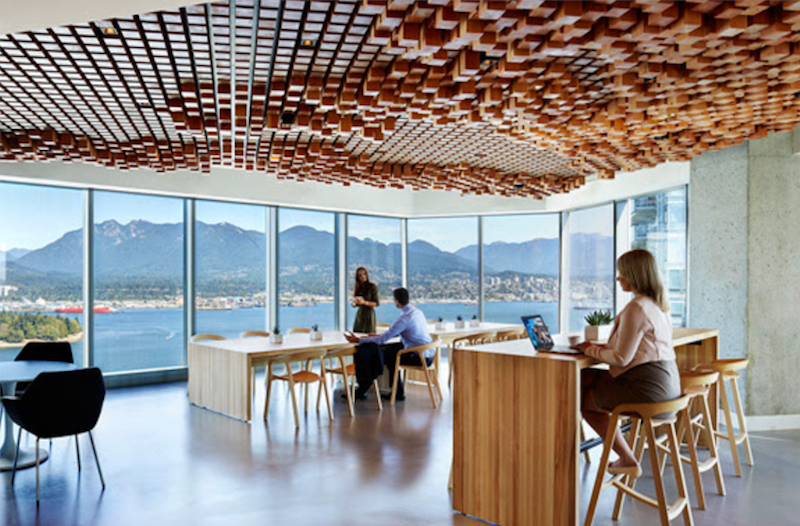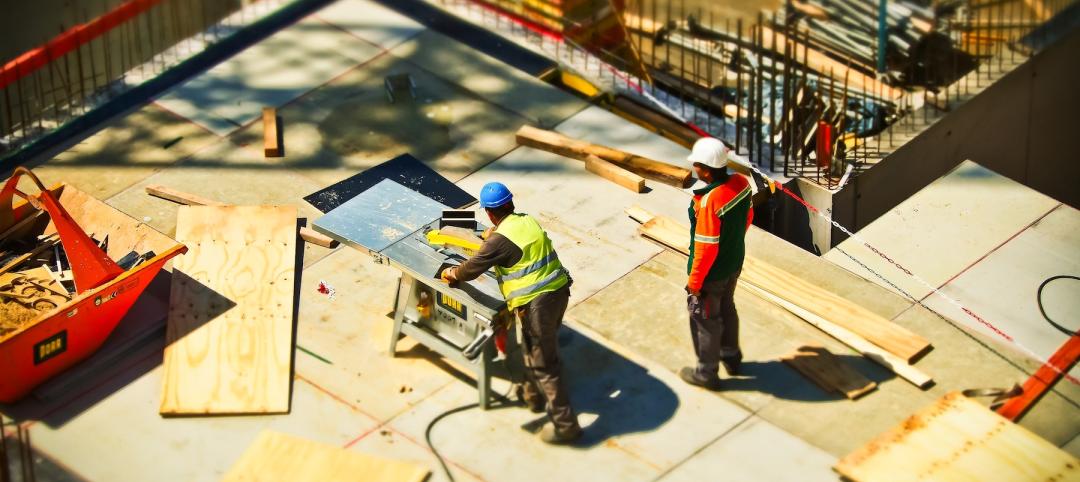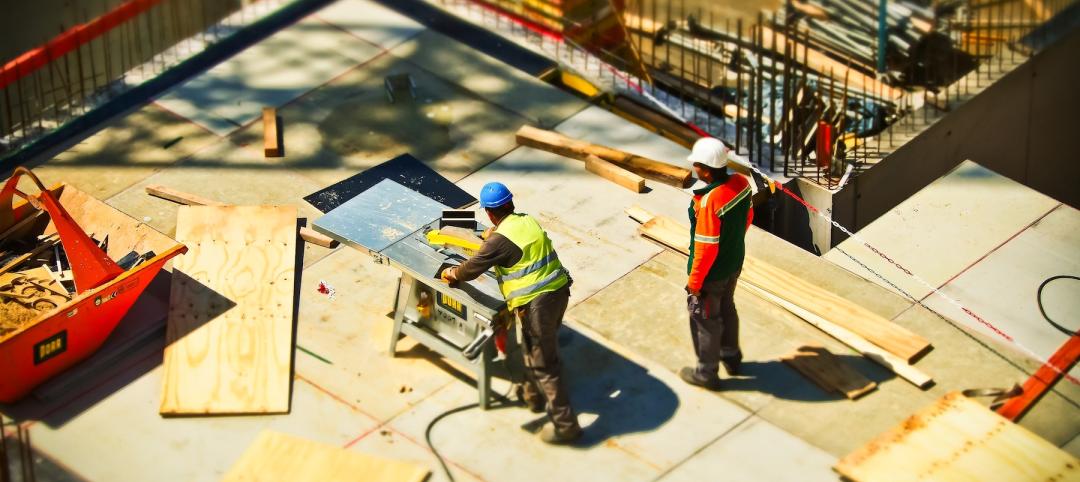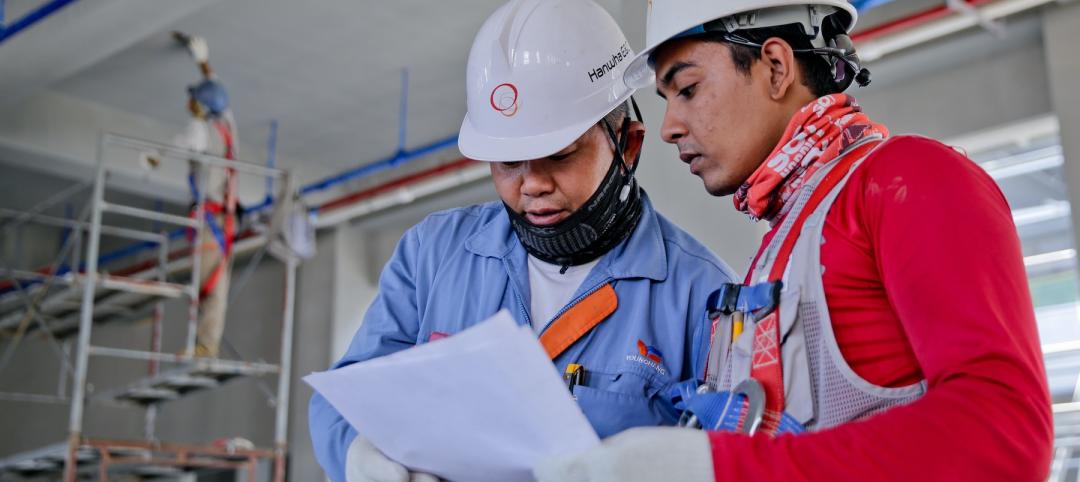The Vancouver office of CBRE Group, Inc. has recently become British Columbia’s first WELL certified workplace for new and existing interiors. The project was awarded gold level certification based on IWBI’s WELL Building Standard.
In achieving the gold level certification, CBRE’s Vancouver office incorporated over 100 wellness features. A staircase interconnects the four adjoining floors and promotes physical activity across the building. To nurture the innate human-nature connection, each floor includes a living tree that adds a biophilic element to employee surroundings. Additionally, a unique wood ceiling in the café was designed as an inverted topographic map of Vancouver meant to add warmth to the space and celebrate local culture.
“At CBRE, we believe that the workplace environment should and can actively benefit the health and well-being of employees, not diminish it,” says Loren Bergmann, CBRE’s Western Canada Managing Director of Workplace Strategy in a release.
The Vancouver CBRE office marks Perkins + Will’s first WELL certified project in Canada. The WELL building standard focuses exclusively on human health and wellness in buildings. It measures, certifies, and monitors building features that affect human health and wellbeing in seven categories: air, water, light, nourishment, fitness, comfort, and mind.
Related Stories
Energy Efficiency | Aug 11, 2022
Commercial Energy Efficiency: Finally “In-the-Money!”
By now, many business leaders are out in front of policymakers on prioritizing the energy transition.
| Aug 8, 2022
Mass timber and net zero design for higher education and lab buildings
When sourced from sustainably managed forests, the use of wood as a replacement for concrete and steel on larger scale construction projects has myriad economic and environmental benefits that have been thoroughly outlined in everything from academic journals to the pages of Newsweek.
Sponsored | | Aug 4, 2022
Brighter vistas: Next-gen tools drive sustainability toward net zero line
New technologies, innovations, and tools are opening doors for building teams interested in better and more socially responsible design.
| Aug 4, 2022
Newer materials for green, resilient building complicate insurance underwriting
Insurers can’t look to years of testing on emerging technology to assess risk.
| Aug 4, 2022
Newer materials for green, resilient building complicate insurance underwriting
Insurers can’t look to years of testing on emerging technology to assess risk.
Sustainability | Aug 4, 2022
To reduce disease and fight climate change, design buildings that breathe
Healthy air quality in buildings improves cognitive function and combats the spread of disease, but its implications for carbon reduction are perhaps the most important benefit.
K-12 Schools | Aug 1, 2022
Achieving a net-zero K-12 facility is a team effort
Designing a net-zero energy building is always a challenge, but renovating an existing school and applying for grants to make the project happen is another challenge entirely.
Codes and Standards | Jul 29, 2022
Few projects and properties are being built beyond code
Clients and architects disagree on how well building to code provides resilience, according to a recent report by the American Institute of Architects (AIA) in partnership with Owens Corning.
Concrete | Jul 26, 2022
Consortium to set standards and create markets for low-carbon concrete
A consortium of construction firms, property developers, and building engineers have pledged to drive down the carbon emissions of concrete.
Green | Jul 26, 2022
Climate tech startup BlocPower looks to electrify, decarbonize the nation's buildings
The New York-based climate technology company electrifies and decarbonizes buildings—more than 1,200 of them so far.

















